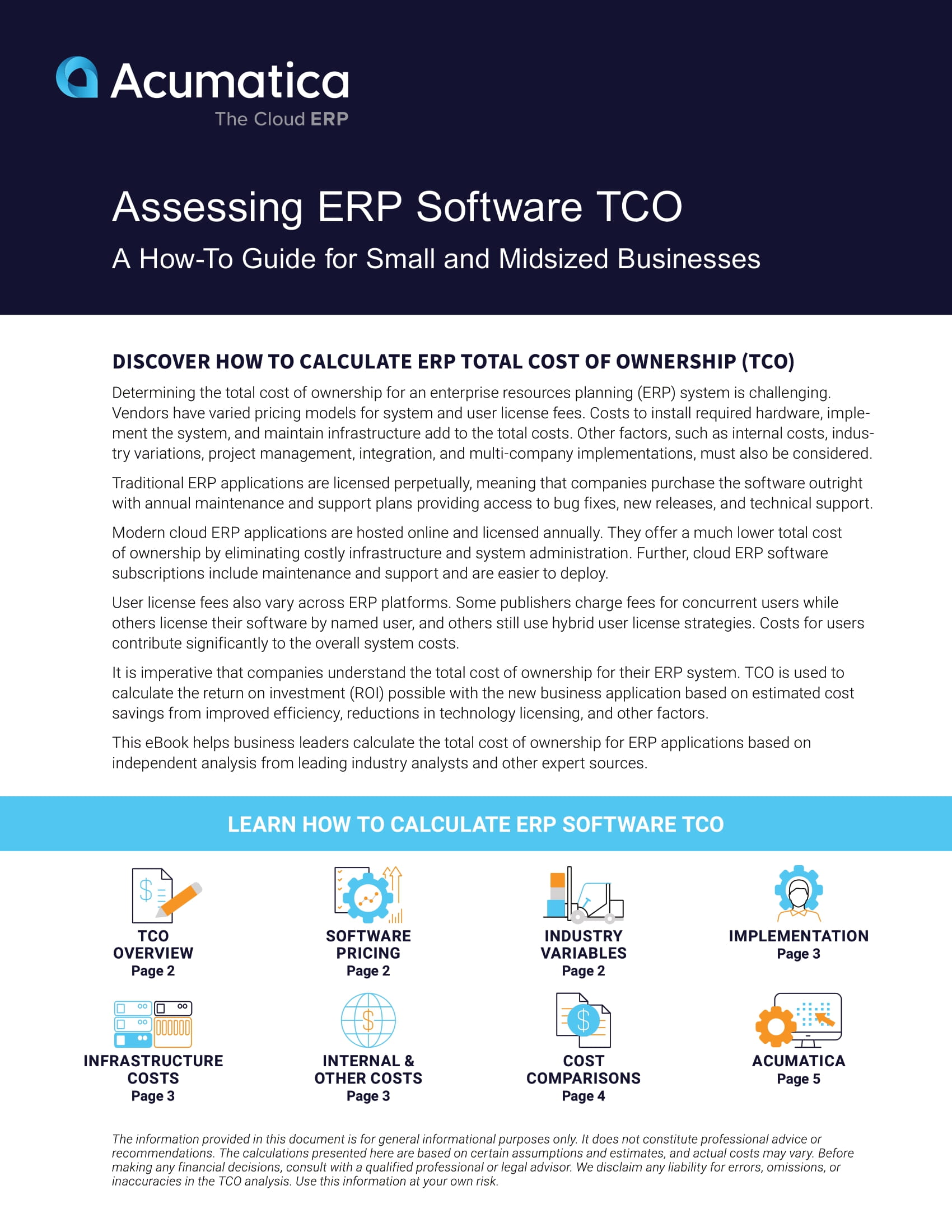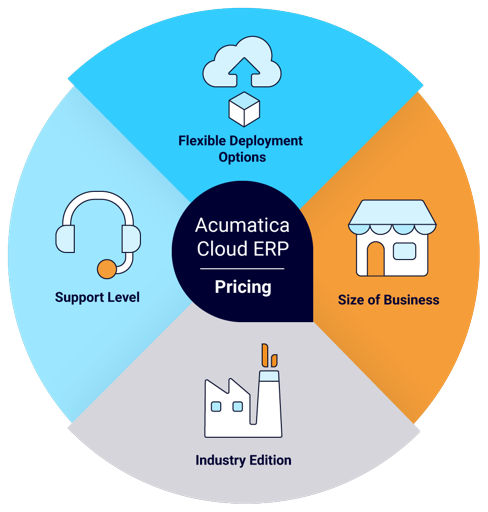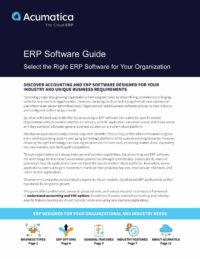How is ERP cost determined?
Changing your financial and business management software represents a significant investment of time and money. Invariably, one of the first questions will be, “How much does an ERP system cost?”
The answer is: It depends on what you need.
ERP (Enterprise Resource Planning) applications are complex and there are many factors that need to be considered before a final price can be given. However, since there are many elements in common among most ERP products, we can provide some general guidance on typical, user-based ERP pricing.
Before you read any further, you should be familiar with the terms included in the section, “Clearing the confusion from buzzwords around the cloud,” from What is Cloud ERP Software?
ERP Licensing
In general, you either buy the software license outright or pay a monthly subscription for the license. There are advantages and disadvantages to both, including:
- Tax advantages of capital vs. operating expenses
- Paying one large upfront cost vs. on-going monthly costs
- Total cost of ownership over the lifetime of the product
When purchasing the software outright, you will also be expected to pay an annual maintenance fee for upgrades. Upgrades are usually included as part of subscription pricing.
Users
In addition to the base software cost, almost all ERP (Enterprise Resource Planning) vendors will charge a fee for every user of the system (Acumatica does not). Users are typically categorized as “heavy” users (those users that need access to the system all day as part of their work, like the accounting staff) and “light” users (those users that only use the system occasionally for price lookups or to enter time and expenses). Licenses are either given to specific user names that can only access one system at a time (named users) or by the total number of users that can access the system at the same time (concurrent users).

Download the ERP Software TCO Guideline
 Canada (English)
Canada (English)
 Colombia
Colombia
 Caribbean and Puerto Rico
Caribbean and Puerto Rico
 Ecuador
Ecuador
 India
India
 Indonesia
Indonesia
 Ireland
Ireland
 Malaysia
Malaysia
 Mexico
Mexico
 Panama
Panama
 Peru
Peru
 Philippines
Philippines
 Singapore
Singapore
 South Africa
South Africa
 Sri Lanka
Sri Lanka
 Thailand
Thailand
 United Kingdom
United Kingdom
 United States
United States



